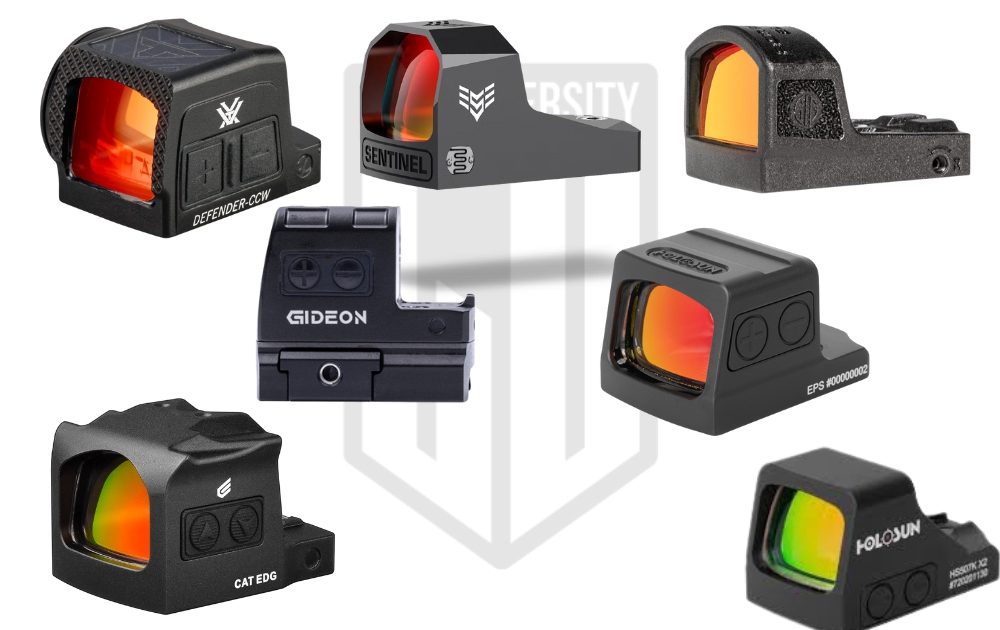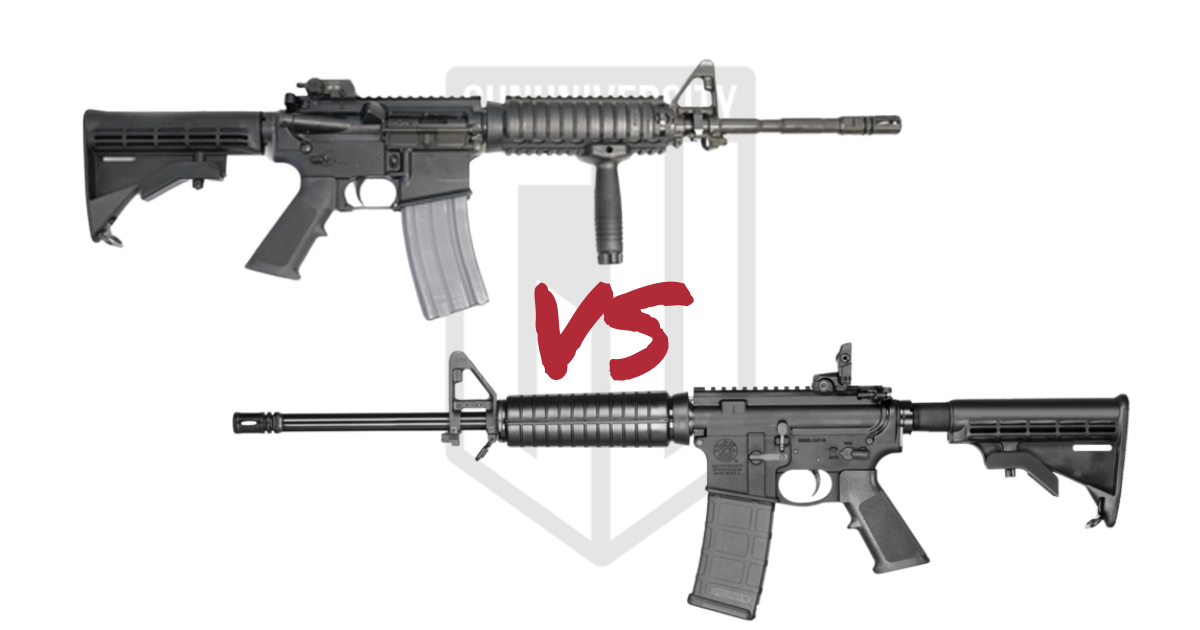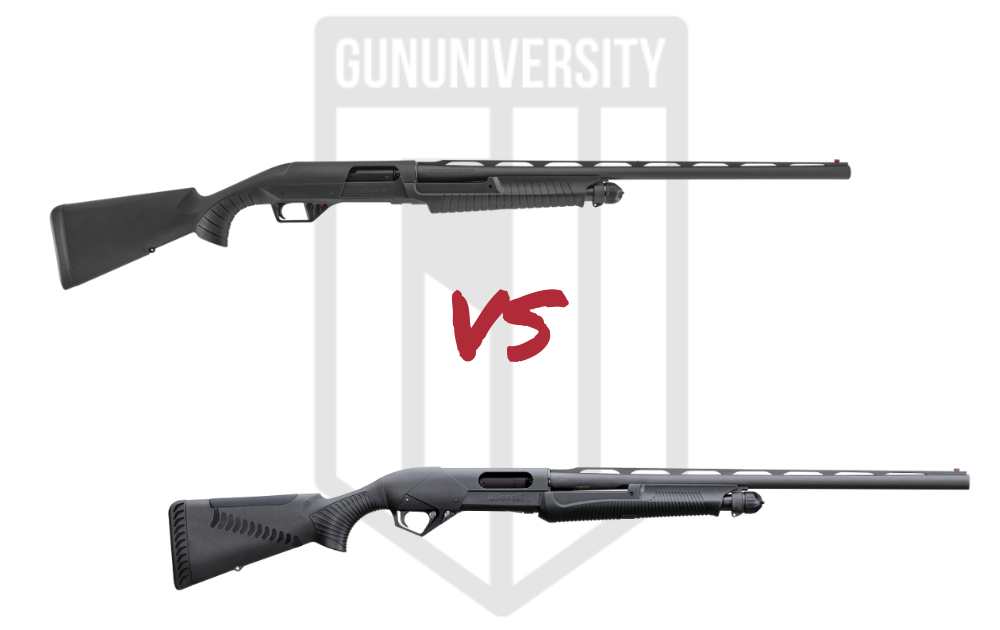IWB Holster Considerations for the Advanced Concealed Carrier
There are more holster companies than almost any other type of firearm accessory manufacturer. In a recent company meeting, my 9 employees could name 68 holster manufacturers off the top of their heads.
Many make extraordinarily excellent products. Most do not. In this article, we take a closer look at the details and attributes of holsters that make the difference between the bad, good, and best holsters on the market.
My hope is that this article will help the reader to pick up any holster in their possession and identify the deficiencies, if any, in that product.
Table of Contents
- Trigger Guard Protection
- Firearm Retention
- Holster Retention
- Gripability
- Finish, Shape, Quality
- Wedges
- Claws & Wings
- Compatible: Optic, Enigma, Suppressor Height Sights
- Bonus: Can You Return It
Trigger Guard Protection
As safety is always first, the most important attribute in a quality holster is the holster’s ability to protect the trigger from outside interference.
It does this by fully covering the trigger guard to prevent any object from entering the trigger guard through a gap or through the holster material itself.
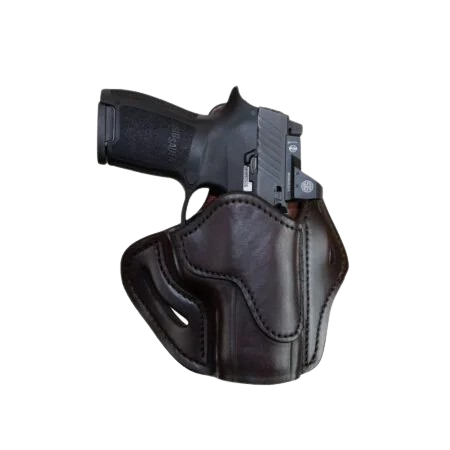
Here is a picture of a holster from a holster company website. When I see a picture like this on a company site advertising a holster, it tells me they don’t know what a good holster should look like.
You might think that the odds of a foreign object slipping into your trigger guard due to that exposure, and then wrapping in front of the trigger and causing it to discharge, are very rare. I would agree, but it does happen. It has happened many more times than you would be comfortable with if you are willing to research it.
In my opinion, it is an unacceptable risk, and frankly an unnecessary one, since there are plenty of quality holster companies out there that design the holster to properly protect the trigger.
In addition to outright exposure and gaps on either side of the trigger guard, one should also be weary of holsters made with soft material that would allow an object to penetrate THROUGH the holster material and access the trigger.
This is a common failure of apparel style holster that utilize a very soft material sewn onto a piece of apparel in which you are meant to carry your gun. If you can press the trigger through the holster material, it isn’t providing adequate protection and is unsafe.
This is why most holsters are made from a thermoplastic such as kydex or boltaron. More traditionally, we’ve used leather to make holsters. Leather is acceptable, but is also less precise and needs to be maintained and replaced in time.
A common red flag is if you see a holster advertised as fitting multiple firearms from multiple manufacturers. It almost certainly is NOT going to provide adequate trigger protection.
Firearm Retention
Second on this list, and also an issue of safety, is the importance that your holster retain the firearm. Meaning that your firearm does not leave the holster when you don’t intend it to.
Perhaps you recall the Denver nightclub incident which received national attention when an FBI agent had his firearm fall out of the holster during his ad hoc dance moves.

You may not be worried about doing backflips at a nightclub, but getting in and out of cars and other normal daily activities has been known to cause firearms to come out of a holster on their own. Its unacceptable.
Holsters made from Kydex or a similar thermoplastic are shaped to hold the firearm in the holster using a tight fit around the trigger guard or the weapon mounted light. This is why the holster needs to be molded for the specific firearm model in order to do so effectively.
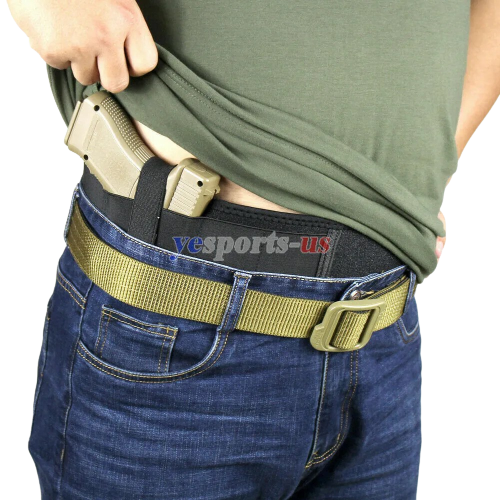
Leather holsters are also often molded to the shape of the firearm. However, the material can weaken over time or, with a lack of proper maintenance, become flimsy or unable to retain the firearm.
I often see holsters utilize some form of retention strap to achieve proper retention.
In most cases, while this likely does solve for any potential concern related to retention, it may get in the way of a obtaining a grip and/or slowing down the draw. We will discuss that aspect of holsters later in this article.
Holster Retention
One holster consideration I often see neglected is the importance of the holster being retained to the body or bag when the firearm is drawn, and during the normal daily carry of the firearm.

If the holster slips itself off of your belt during the day, that is an obvious failure and major problem. I recall a time when I saw a man at a Walmart with a hybrid 2-clip holster half out of the pant and about to fall out entirely.
I once felt my holster slide out of my pant onto my car seat as I was sitting down in the car. Not only do we want to avoid those situations, but we also need to avoid the potential issue of the holster coming with the gun when you draw it and present it to the target.
For those reasons, this is a critical attribute of a good holster. Since we attach most holsters to the belt of our pants, the most common way to fail is to use a junky or ineffective holster clip or belt attachment.
This might be the absolute most common failure point I see in IWB holsters. Holster companies are prone to utilize low-cost plastic and metal belt clips that they advertise as “easy on” but unfortunately are also easy off.
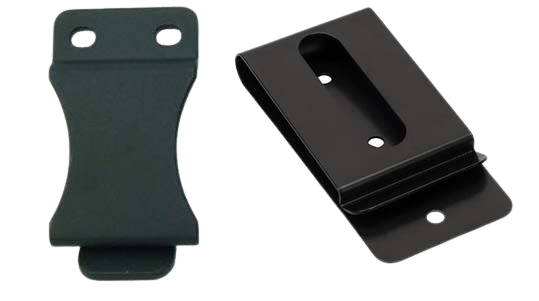
A quality holster maker utilizes quality clips. One thing to look for is some sort of reverse angle clip. A reverse angle clip, as shown below, is going to increase retention by making it unlikely that the holster could slip or slide off the belt unintentionally.
One brand to look out for is Discreet Carry Concepts (DCC) which is a manufacturer of top quality belt clips and their product is used by some of the best holster companies.
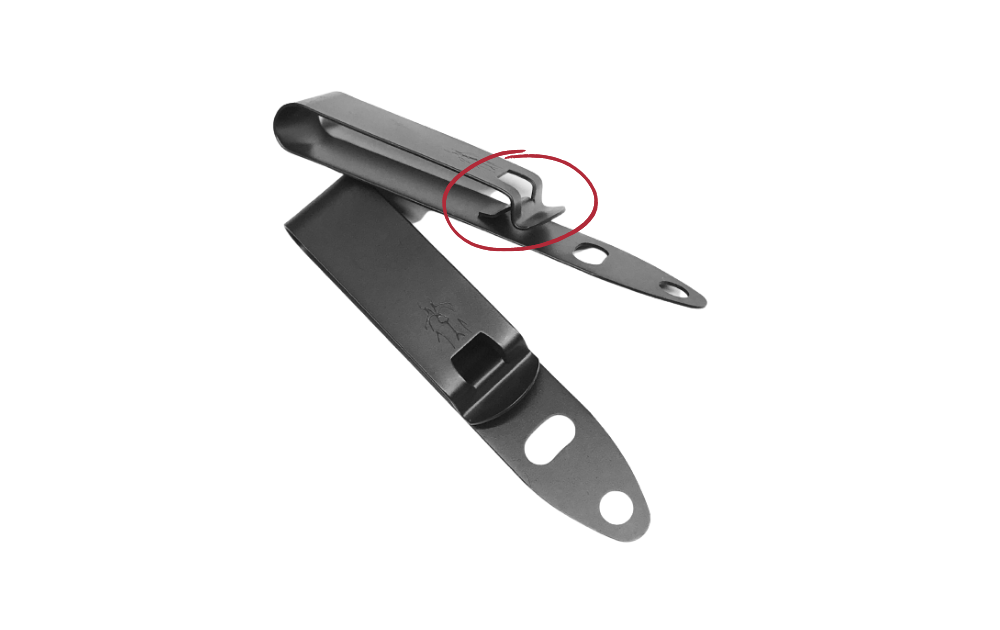
While this article focuses on holster attributes, it is worth noting that a quality belt contributes to holster retention also and shouldn’t be neglected. While it is a topic for another day, we feel KSG Armory Holsters has a great list of quality concealed carry belt options worth reviewing.
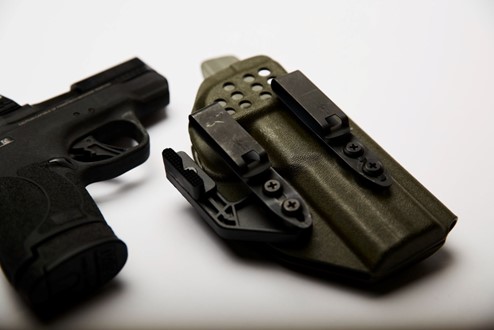
If you are carrying off body, or using some other method of concealed carry, you will need to consider if it will hold up to strenuous use and stay in place when you draw your firearm.
Gripability
The next job of your holster is to present the firearm to you in a way that allows you to fully grip it with your dominant hand.
If, when you draw your gun, you cannot acquire a full and strong grip, you will be compromised. Either you will have to shoot with a poor grip or pause the draw stroke to adjust your grip.
Doing so either slows you down or makes your shots less accurate. Either way, it isn’t ideal. For that reason, a holster should present the firearm to you that allows a full grip.
In my experience, there are 5 ways that the holster tends to fail in terms of not allowing a good grip from the draw. The first we previously mentioned regarding retention straps getting in the way. Here are 4 more common failure points:
Holster Material
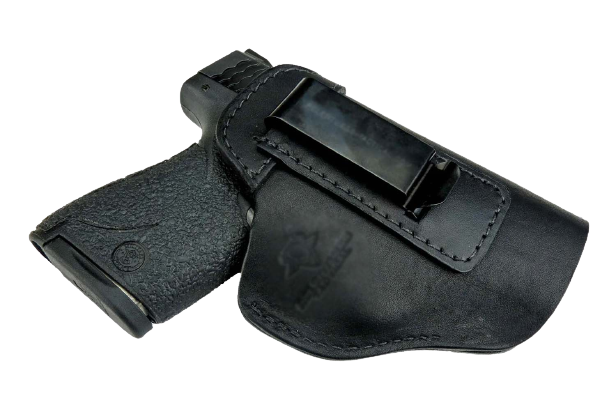
Since a good grip requires getting the web of your hand high and tight under the beaver tail of the firearm and your middle finger high and tight under the trigger guard on the front of the grip, any holster material that gets in the way of doing so is undesirable.
KSG Armory Holsters, whose holsters meet all these guidelines, using the term “Trigger Guard Relief Cut” to describe removing material from that point where the bottom of the trigger guard and the grip of the gun meet. That Trigger Guard Relief cut prevents any issue of holster material interfering with the grip.
Ride Height
Regardless of other factors, if your holster rides too low in the pant, then the space between the belt or top of your pants, and the grip of the firearm will be too tight to allow you to insert your fingers and grip the gun.
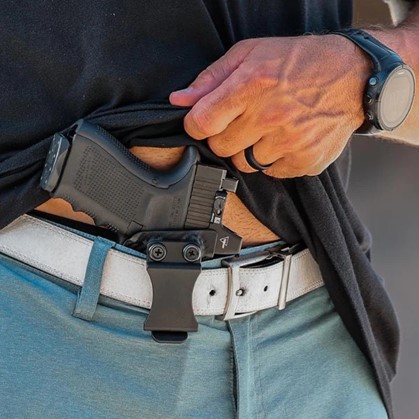
Some holsters have adjustable ride height so you might be able to address this problem, though the one in the above picture does not.
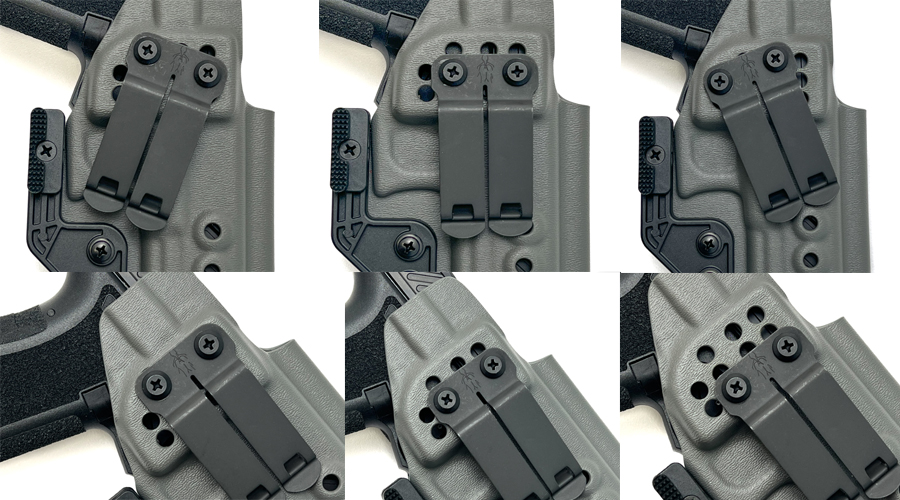
Sweatguards
Sweatguard is the name used to describe the holster material that goes between the firearm and your body above the belt line.
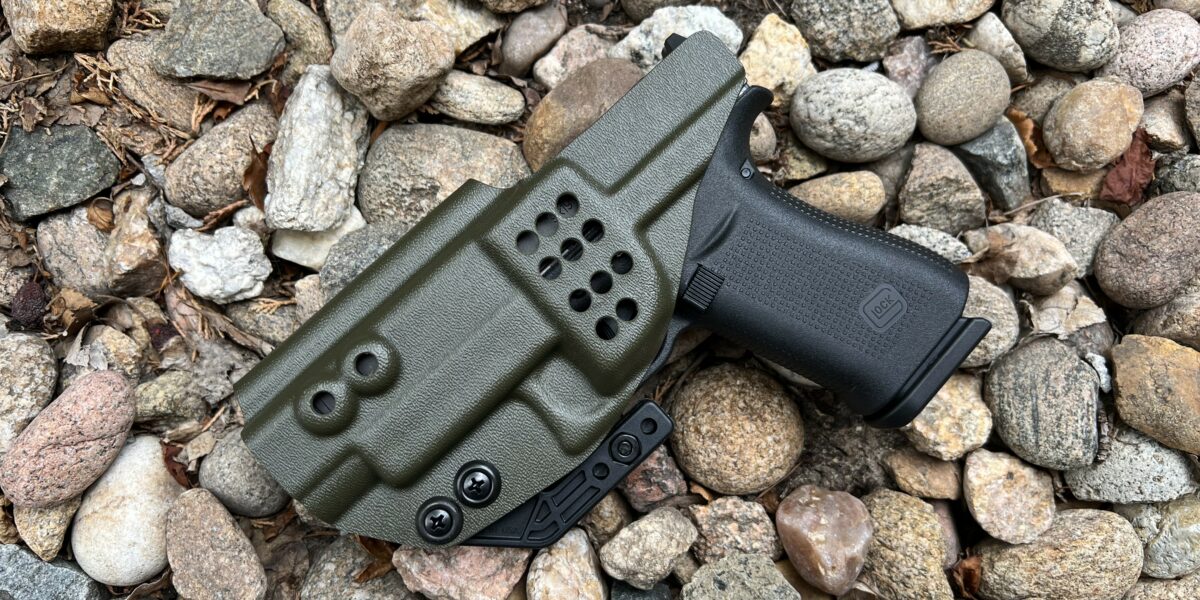
A sweatguard can have several advantages including: increasing comfort, protecting your firearm from sweat, and making re-holstering easier and safer.
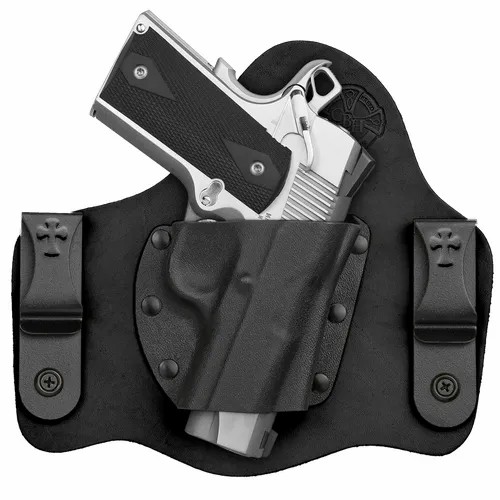
Unfortunately, again we see that most sweatguards are done sloppily by holster companies and end up being a liability in several respects, including impairing the ability to grip the gun properly.
A good sweatguard is cut to the exact shape of the gun and cannot interfere with your ability to grip the gun from the holster during the draw.
While I focus this section of the article on grip-ability, I want to take a moment to reiterate that a good sweatguard is desirable, as it also allows for greater ease and safety in re-holstering.
Tilt
I use “Tilt” to refer to the common and natural tendency of the gun in the holster to slowly tip over at an angle while in your pant. The grip of the gun is full of heavy ammunition and the gun can slowly “fall” down or tilt over due to that weight and/or our natural body movements.
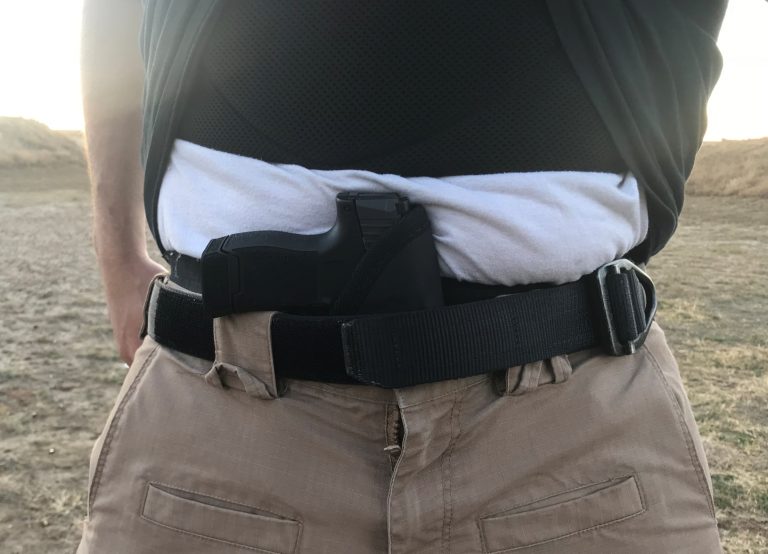
This has the unfortunate effect of placing the grip of the gun directly on top of your pant and belt and making it very difficult to acquire a grip on the gun.
This is often a byproduct of inferior quality belt clips, low-quality belts, or mismatches belt and clip. After all, the highest quality 1.5” belt clip is going to tilt over on a 1” belt.
Finish, Shape, Quality
Quality IWB holsters have a level of craftsmanship that reduces cracks or breaking and increases comfort.
Your holster shouldn’t have squared off or sharp corners. Quality manufacturing processes remove excess material, leave rounded and buffed edges that are soft and won’t dig into your skin.
In my experience, holster websites rarely disclose what size of kydex material they use, but I have found that a minimum of .08” material is necessary to ensure the holster won’t break or snap under pressure.
Wedges
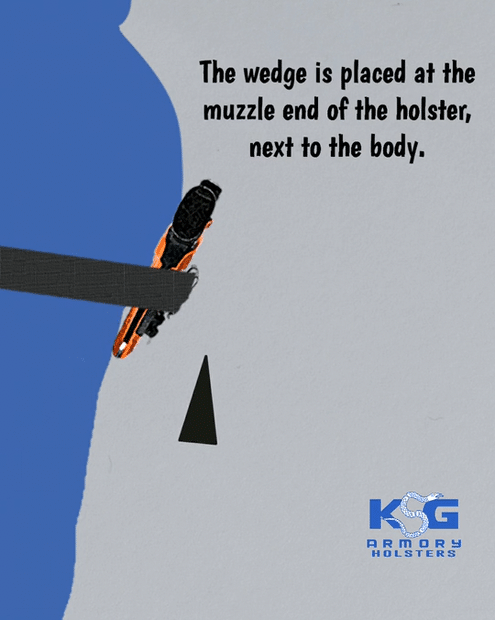
The holster wedge is a relatively new concept in concealed carry that adds comfort and concealment.
We place the wedge inside between the base of the holster and the body. This provides a layer of cushion in the most sensitive part of the body in contact with the holster while also pivoting the grip of the gun inward toward the body. This counteracts the otherwise natural tendency of the gun to be pushed forward, away from the body.
Wedges are most prominent in appendix carry, so depending on your carry position, you may find you don’t need a wedge. However, if you are carrying in the appendix position, you ideally want a holster that comes with or to which you can add a wedge easily.
If your holster didn’t come with a wedge and you wish to add one, consider the Universal Foam Holster Wedge from KSG Armory.
Claws & Wings
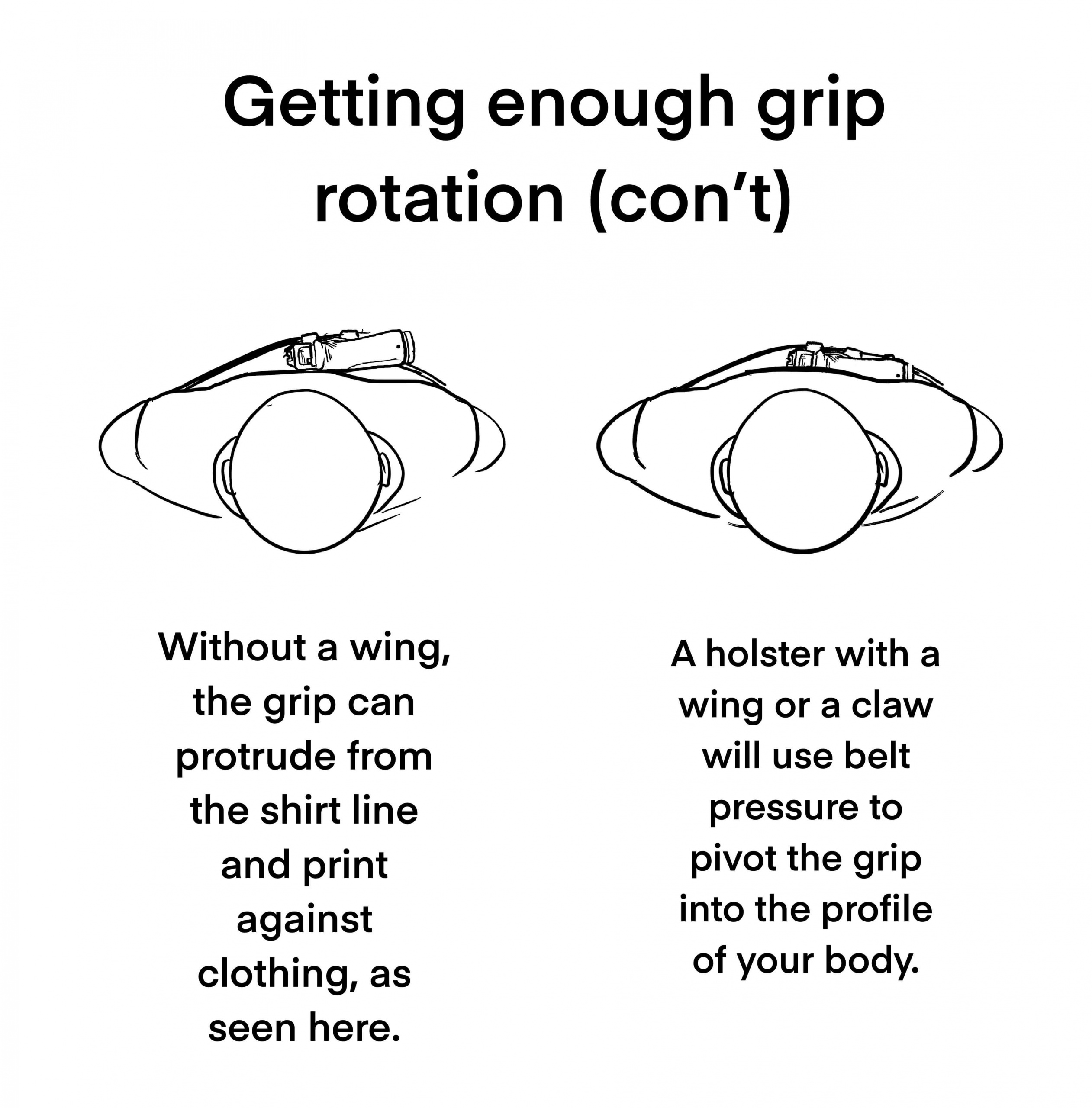
The Claw or wing (use these words interchangeably) is also a relatively modern addition to holster design and adds torque from your belt to pull the holster inward to the body.
A wing is an effective addition to concealment and is especially useful when carrying in the appendix position.
Many holster companies manufacture their own wing or claw while others make their holster compatible with the 3 industry standard wings that professionals have accepted.
The Modwing, the Darkwing, and the RCS Claw are all proven products in use by many holster companies. The Darkwing and the Modwing both have adjustable height options, but only the Modwing is fully ambidextrous, making it my favorite by far.
I find that most of the proprietary wings and claws being made by holster companies fall short of the Modwing.
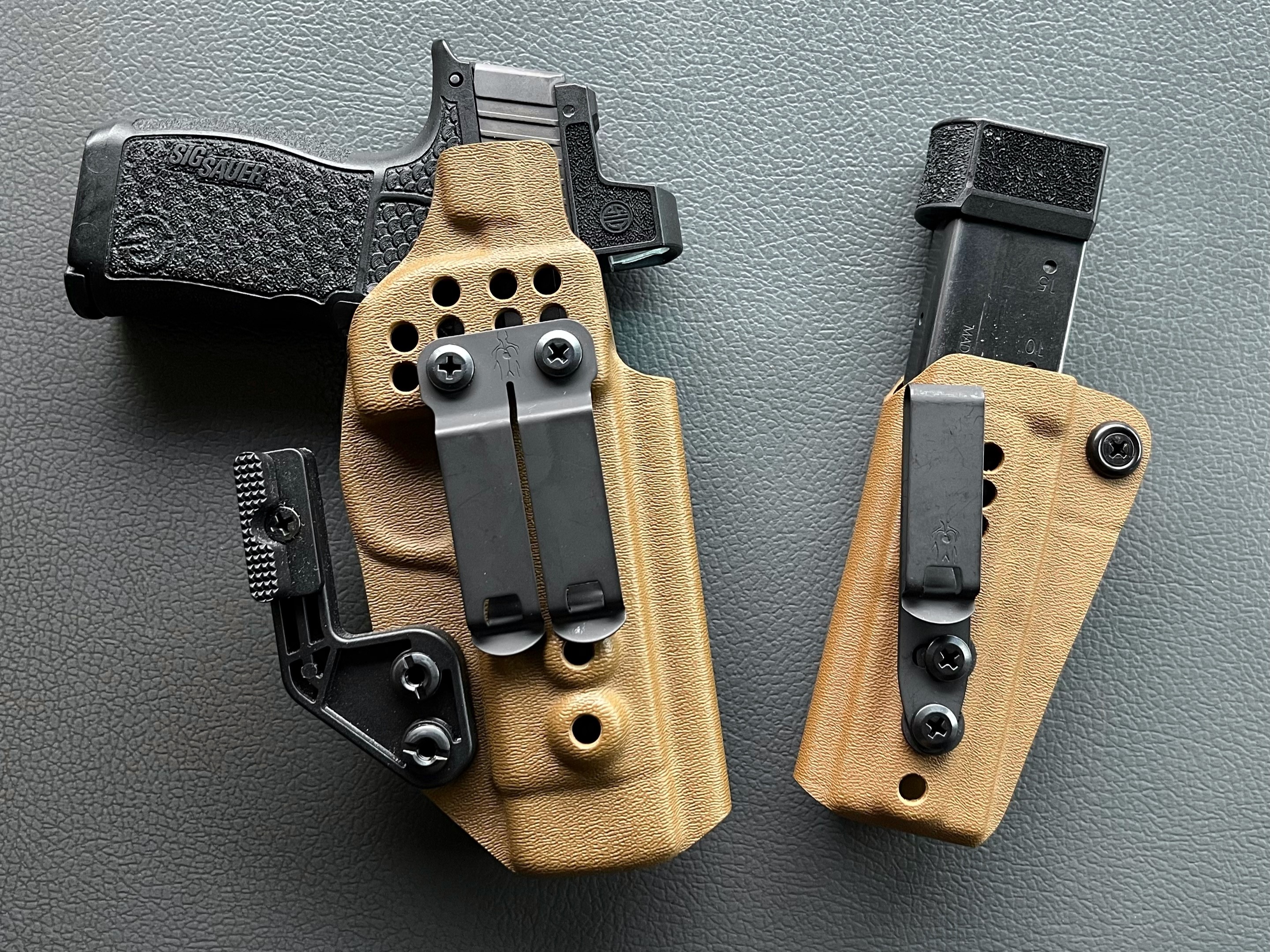
Compatibility
Our last consideration of IWB holsters is compatibility. In this fast evolving world of concealed carry, you want a holster that is going to last a long time and won’t have to be replaced as you upgrade your firearm.
There are a countless number of potential firearm modifications that can be done. Adding a red dot and suppressor height sights are growing in popularity.
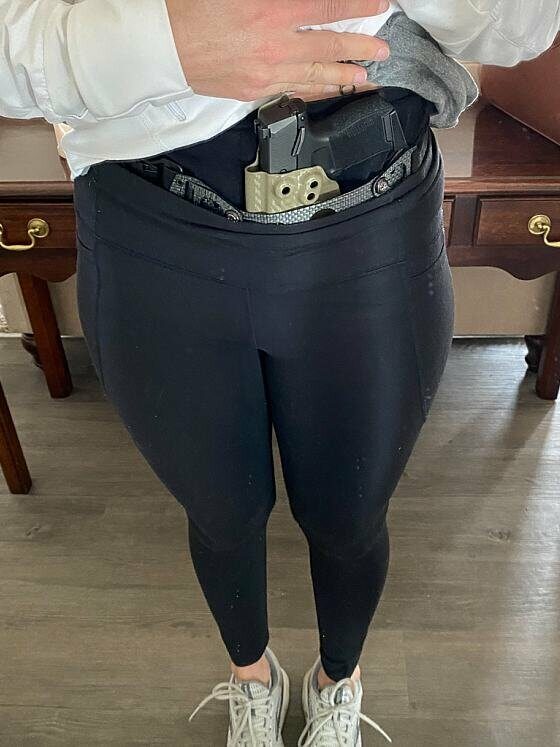
It would be a shame if, after installing your pistol red dot on your firearm, you discover the holster no longer fits.
Sometimes a file or a Dremel will get the job done in making a slight modification to your holster. However, there is really no reason today for a holster company to be making a holster that isn’t immediately red dot and suppressor height sights compatible. Is yours?
Also, the Phlster Enigma is a relatively new holster belt chassis that is growing in popularity as an alternative way to carry a concealed firearm that doesn’t require pants with a stiff belt.
However, the Enigma is designed such that it won’t work with any holster on the market. Only holsters advertised as “Enigma Compatible” will for sure work with the Enigma.
You may or may not want to use the Enigma now or in the future, but when shopping for a new holster, it may be comforting to know that it is Enigma compatible.
Bonus: Can You Return It
I offer one bonus holster consideration. Can you return it for a refund? As you have seen from reading this article, I have very high standards in a holster and so should you. Many of those standards you may be able to quickly identify when shopping for a holster, but some may not be clear until you have spent the money and have it in hand.
Should your new holster not meet these criteria, you may consider returning it and frankly, even if it does meet all these requirements, there is still the very real possibility that you won’t personally like it or find it comfortable.
Recent Posts
October 11, 2025
October 11, 2025
October 11, 2025
October 5, 2025

